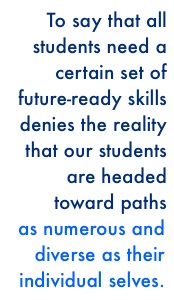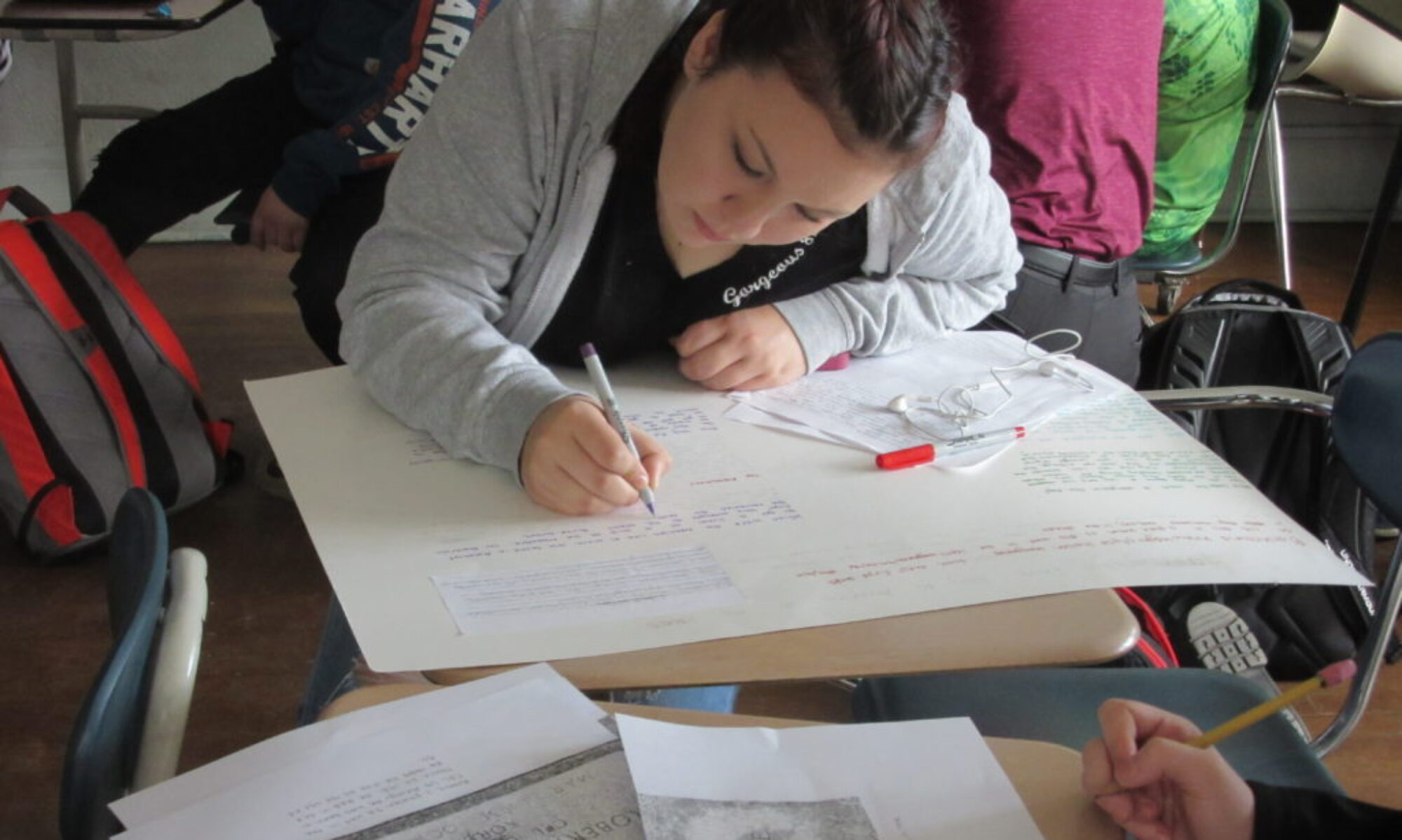Shifting the conversation from “the future” to my future
 When “21st century skills” first emerged as an educational term, we were just on the precipice of our new century, and talking about the next one hundred years felt future-forward. Now, fifteen years in, “21st century” to me implies current more than future.
When “21st century skills” first emerged as an educational term, we were just on the precipice of our new century, and talking about the next one hundred years felt future-forward. Now, fifteen years in, “21st century” to me implies current more than future.
“21st century,” then, as a descriptor for a set of skills, gets confusing.
Whose future is it, anyway?
Does it mean we want to educate students to exist in the world we live in? Or the world of the future? Or just the next 85 years until the 22nd century? What assumptions do we make when we talk about “the world we live in,” anyway?
As we know, the world our students live in varies greatly even between towns in Vermont, let alone state to state, to say nothing of global differences. In an informal survey of some of my fellow educators, the only consensus on the meaning of the word was “an outdated term that used to mean ‘futuristic.’”
If the term “21st century” is meaningless on its own, what about the things it describes?
Some of the skills and attributes commonly clustered under “21st century” include critical thinking, collaboration, internet literacy, innovation, and technological fluency. If “21st century” doesn’t quite work, how instead do we group together these skills under one umbrella term?
Well, maybe we shouldn’t.
 To say that all students need a certain set of future-ready skills denies the reality that our students are headed toward paths as numerous and diverse as their individual selves.
To say that all students need a certain set of future-ready skills denies the reality that our students are headed toward paths as numerous and diverse as their individual selves.
Instead of ushering students toward an ill-defined grouping of skills for a 100-year span, we could help students define their own future goals and identify what skills are needed to meet those goals.
Instead of “I want my students to develop 21st century skills” we can say “ I want my students to develop the skills and attributes they each need to meet their own goals.”
When we shift the conversation with students from the future to my future, students can develop more ownership. Sometimes I hear the phrase, “we are preparing students for jobs that don’t exist yet,” yet in my experience we are helping students navigate through a world that very much exists right now. We can help students grow by acknowledging their present, setting specific goals for the short and long term, and then developing concrete steps to get to those goals.
Getting specific about the future — and about students’ futures
As a teacher, I remind my students that to communicate well, we should use specific and concrete examples when explaining bigger ideas. I can model that through choosing more specific and concrete language rather than defaulting to a term with little meaning. I would like to empower my students to define their own future, its depth and breadth, whether that’s getting a driver’s license or maintaining a healthy relationship or combating global warming or traveling to Mars or maintaining the family business for the next generation.


Alex Shevrin on What to say instead of “21st Century” when we talk about learning for the future #vted http://t.co/5Wvp2ndtws
What to say instead of “21st Century” http://t.co/2H0CrqaCjw
RT @innovativeEd: Alex Shevrin on What to say instead of “21st Century” when we talk about learning for the future #vted http://t.co/5Wvp2n…
For the afternoon crowd: @shevtech on What to say instead of “21st Century” https://t.co/QtIPiWHhxc
What to say instead of “21st Century” https://t.co/mOECl6bZ9j via @innovativeEd
Very very nice information …. Actually u went in depth of this… So that’s why I really liked it thanks